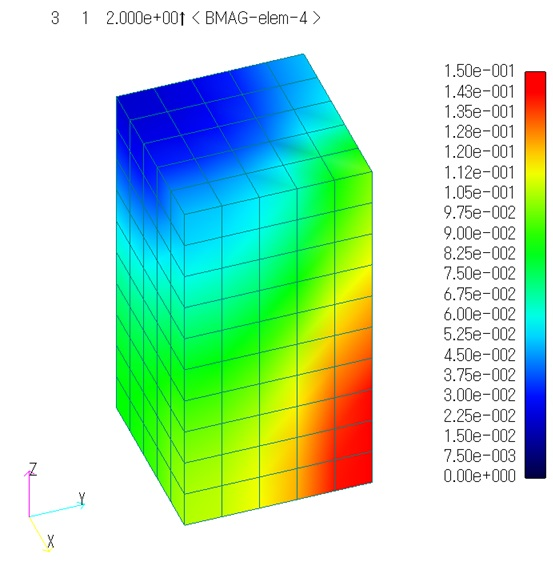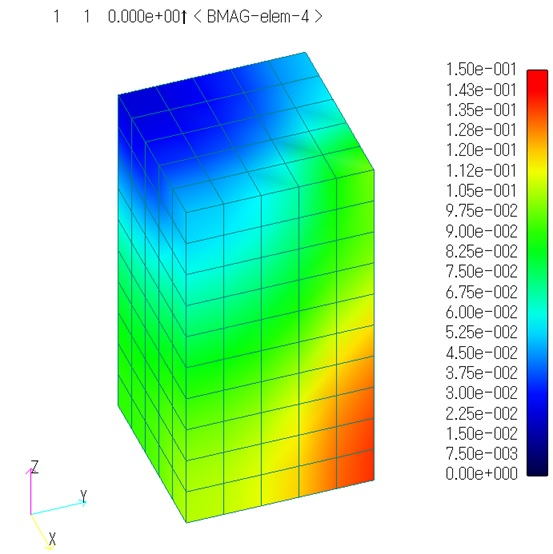Analysis considering temperature dependence of magnetization properties
- TOP >
- Analysis Examples by Functions (List) >
- Analysis considering temperature dependence of magnetization properties
Summary
There are various types and applications of electrical equipment, some of which use Curie temperatures, in which magnetic materials lose their magnetism above a certain temperature. When analyzing electromagnetic fields of such devices, temperature-dependent analysis of magnetization characteristics (BH curve) is considered effective. This section describes the analysis function to consider temperature dependence of BH curve.
Explanation
Since there is no suitable temperature-dependent magnetization property, we use the model used in "Non-linear staticmagnetic field analysis" to show an example of a temperature analysis of a magnetic material. The temperature-dependent BH curve used is appropriately set so that the magnetization property worsens with temperature. Figure 1 shows the magnetic flux density distribution at room temperature and at high temperature. At high temperature the temperature of the elements is set so that the outer side (upper side in the figure) is hotter than the center (lower side in the figure). You can see that the distribution is different because the temperature-dependent BH curve is used.

(b) High temperature
The outer side (upper side in the figure) is hotter than the center (lower side in the figure).
Figure 1 Magnetic flux density distribution (T)
We introduced this function by using simple model because there is no suitable example for temperature-dependence analysis of magnetization properties. The purpose of this function is to set temperature-dependent BH curve, but it may be possible to analyze the BH curve depending on an appropriate physical quantity other than temperature. We hope you will make use of this function.
The rest of this page is for members only.
Analysis Examples by Functions
Iron loss, permanent magnets and laminated iron cores
- Iron loss calculation using half-cycle periodicity
- Analysis of laminated iron cores by homogenization method and output of magnetic flux density of iron section of laminated iron core
- Analysis using nonlinear two-dimensional anisotropic magnetic properties
- Magnetization input to MAGNET by function
- Iron loss calculation by post-processing
- Evaluation of the rate of decrease from the input magnetization to the operating point and permeance coefficient of permanent magnets
- Demagnetization analysis of permanent magnets
- Analysis considering temperature dependence of magnetization properties
©2020 Science Solutions International Laboratory, Inc.
All Rights reserved.



